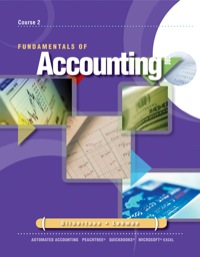

Jan 1 Jan 1 One of the easiest ways to keep track of the transactions for a simple business is to record them in a synoptic using a spreadsheet. A synoptic uses a spreadsheet format whereby columns serve as ledger accounts and rows serve as journal entries. Each row is used to record a transaction with debits shown as positive amounts and credits shown as negative amounts so that each row cross adds to zero. Each column tracks the movements in an account that can be totaled to determine an account balance which can then in turn be referenced into financial statements. As more transactions arise, you simply add more rows to the spreadsheet, updating the column totals and ultimately the financial statements. Use the straight-line method for all non-current assets. In this part of the assignment, we are going to assume that you incorporated a company named ABC Limited on January 1, 2017 and have operated the business for the one-month period ending January 31, 2017. The transactions for the month are as follows: Date Transaction Amount Jan 1 Issued common shares 400,000 Received a bank loan - no principal payments are due for 2 years 240,000 Jan 1 Paid three months' rent in advance (January, February, March) 45,000 Jan 1 Paid a twelve month insurance policy in advance 6,000 Bought a vehicle with cash 60,000 Jan 1 Bought computers on credit 12,000 Jan 4 Performed a consulting service for customer #1 on credit 55,000 Jan 7 Collected half of the amount owed from customer #1 Jan 10 Paid cash for supplies 2,000 Jan 17 Received a deposit from customer #2 40,000 Jan 18 Paid for 25% of the computers outstanding balance Work for customer #2 complete but the total customer bill was... 48,000 Jan 29 Declared a dividend (to be paid in March 2017) 2,000 Jan 29 Received a deposit from customer #3 10,000 Jan 30 Paid wages for the month 15,000 Jan 31 The January utility bill has not been received but it is estimated to be... 5,000 Jan 31 Half of the supplies are on hand Jan 31 Interest on the loan is 5% but no interest or principal payments have been made Jan 31 The computers have a four year life with no residual value Jan 31 The vehicle has an eight year life with no residual value Jan 31 Income taxes are not yet paid and the tax rate is 25% Jan 27 There are more journal entries required than transactions listed above Date Here is an example of what a synoptic could look like. Let's assume that we have only six accounts in our business: cash, accounts receivables, common shares, retained earnings, service revenue and income taxes. We create a column for each of these accounts listing from left to right, balance sheet accounts, then statement of changes in equity accounts (dividends), and then income statement accounts. We then record the following transactions: Jan 1: Sold shares for $100 cash Jan 2: Earned service revenue of $50 to be paid in 15 days Jan 3: Paid income taxes of $20 with cash Here is a synoptic (debits are positive and credits are negative). Description Cash Accounts Common Retained Shares Earnings (100) (50) (20) 80 (100) (50) If we have done this correctly, the sum of each row will equal zero (our debits will equal our credits) as each row represents a single transaction. You must then create properly formatted financial statements (see D2L/Assignment 1/Financial Statement Example.xls) with the amounts on the financial statements being referenced from the totals on the synoptic. Don't forget to use a reference with a negative sign if you want to switch an amount that is bracketed in the synoptic that you don't want bracketed in the financial statements. We will also be marking the extent to which you have properly referenced these amounts from column totals into the financial statements. Receivable Service Revenue Tax expense 100 Jan 1 Jan 2 Jan 3 Total Sold shares Revenue Paid tax 50 20 20 50 Required: 1. Complete the synoptic as described above and print out using landscape format with gridlines. 2. Prepare the following: A properly formatted multi-step income statement (for the month of January 2017) A properly formatted balance sheet (as at January 31, 2017) *Please note that these statements will be evaluated on both the proper format and proper accounting treatment. This includes (but not limited to) proper use of subtotals, ensuring all financial statement numbers are referenced from the synoptic and proper use of financial statement dates and titles 3. Prepare the same pages for the financial statements as in Requirement #2 but instead of showing the account balances, show the formulas for each cell. This can be done by clicking on Formulas and then Show Formulas in Excel. Now reprint the financial statements ensuring that formulas are displayed in cells instead of amounts








